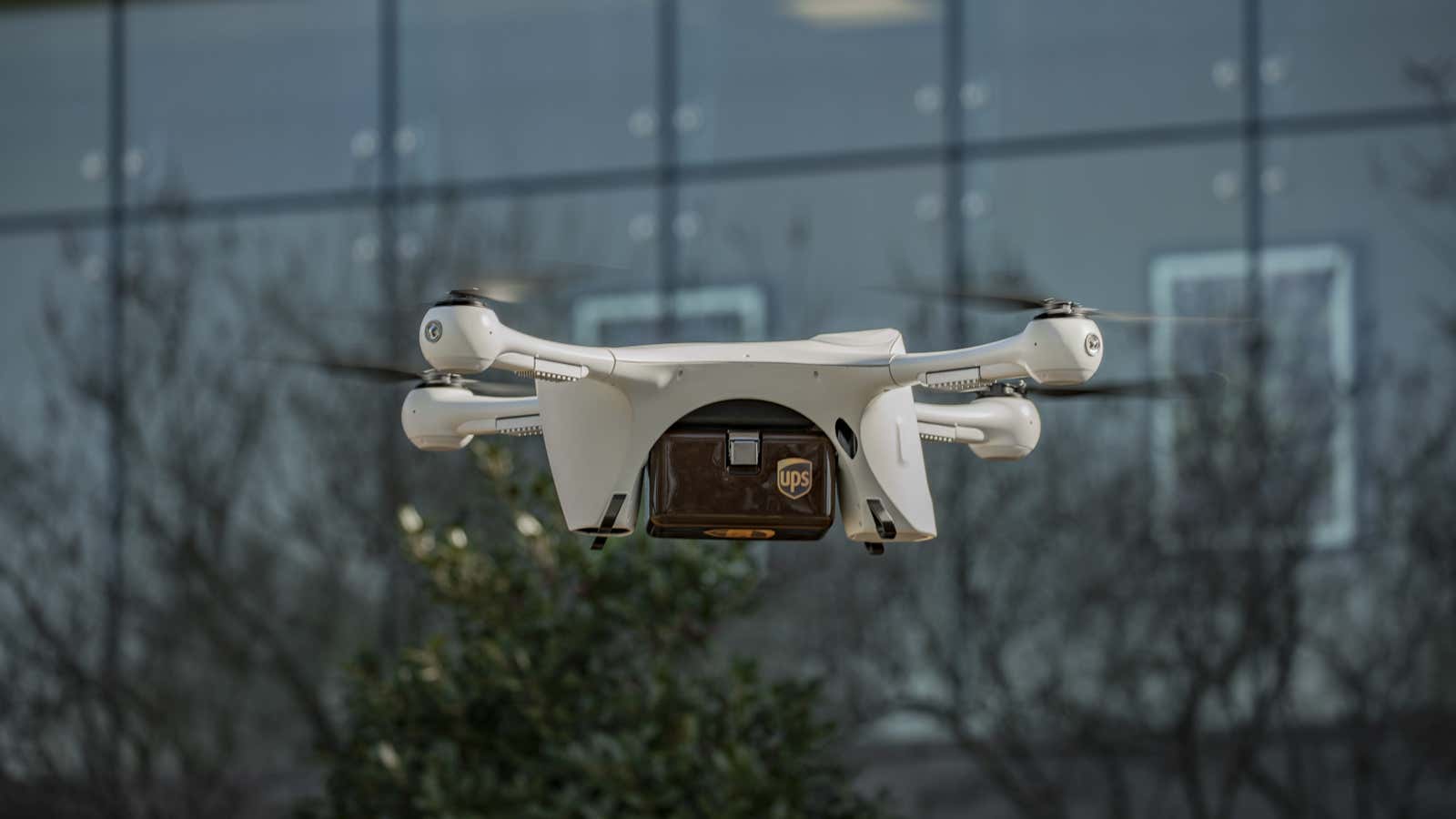What can brown fly for you?
UPS announced it has submitted an application to the Federal Aviation Administration (FAA) to operate commercial delivery drones in the US, through a new subsidiary called UPS Flight Forward.
The company has been working closely with the FAA over the last year; in 2018, the agency launched a program to test out drones in a range of autonomous flying situations, and UPS was one of the accepted applicants. It’s been couriering lab samples around the WakeMed hospital campus in Raleigh, North Carolina, in partnership with the drone startup Matternet.
Bala Ganesh, head of UPS’s advanced technology group, says that once the FAA has certified the new company, it plans to build upon the work it’s been doing in healthcare deliveries.
“The time for storyboarding and testing is over,” Ganesh said. “We are now moving into the deployment phase.”
UPS won’t be the first drone company to be given what’s called air-carrier certification, allowing it to operate commercially in the US. That honor went to Wing, a subsidiary of Google parent Alphabet, which got its FAA approval in April.
UPS is hoping to get its certification later this year, at which point Ganesh says the company will expand its drone activities in three ways. First, it wants to replicate the work it’s done at WakeMed at other large medical facilities that need lab work ferried around as quickly as possible. It then wants to begin flying farther, using autonomous drones to potentially fly between five and ten miles from their point of origin. (Right now, most drone operations in the US need to be conducted within the line of sight of a pilot.) After that’s been mastered, UPS wants to fly its drones at night.
Ganesh says much of this work shouldn’t require many changes to the hardware UPS has been using to date, but it needs to work with its partners and the FAA to determine how its drones should operate in these new situations. Nothing like this has really been done at scale before—Wing is still very much in a testing phase, and most other autonomous drone operations are either very small or tend not to fly near people. “It’s like we’re designing the airplane and flying it at the same time too,” Ganesh says.
UPS doesn’t plan, at least for the near future, to offer drone deliveries to regular customers, so don’t expect to be getting your next online order delivered to your house by drone. For now, it’s concentrating on small payloads for healthcare. But Ganesh says other “urgent point-to-point needs” are being looked into. It really comes down to cost: right now, flying these drones isn’t cheap, and there are few customers that will pay for immediate deliveries at these prices outside of the healthcare industry. But as drone technology proliferates, UPS will likely look at delivering wherever it’s profitable to do so.
